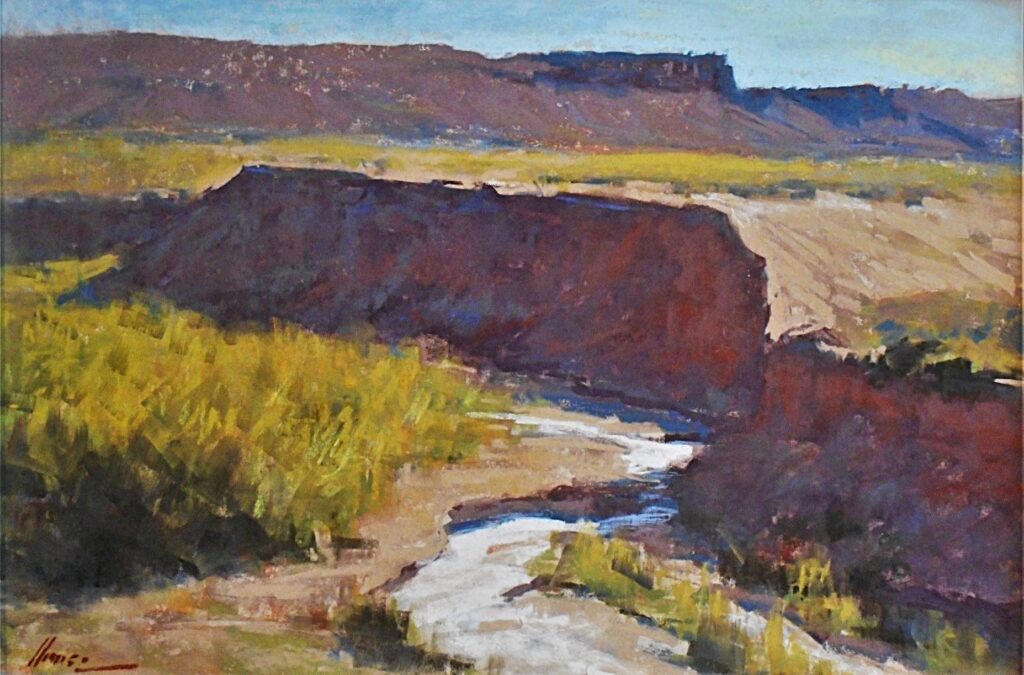“It is impossible and senseless to commit oneself to plein air painting practice without some view of why you are doing it”.
“One cannot simple take nature just as she is” -Edgar Payne
“I am never in a hurry to reach details. First and above all, I am interested in the large masses and the general character of a picture”. – Corot
Edgar Payne once said, “If anyone in the beginning of compositional study will set themselves to study the various compositional forms and experiment and practice with the variations of them, they will find their instinctive taste developed and subjects in time will lend themselves easily for their feeling of unity”. Edgars Payne’s sentiment on composition was my inspiration and guide for my plein air practice and studio design work.
In Daniel Burleigh Parkhurst’s book, The Painter in Oil, he says “all good work is from the general to the particular, from the mass to the detail. Keep that in mind as a fundamental principle of good work, whatever kind. You should never place a detail until you have placed your larger masses. The relative importance of things depends on the consideration of those most important “Firsts.” Let this be the first important rule in starting a drawing or painting.
Five Questions to ask yourself- What did I learn from today’s painting experience outside. This helps us better experience new painting experiences outdoors.
1.How was my outdoor painting gear and clothing for plein air? Was I comfortable or hot or cold or wet? Neutral colored clothing is good for outdoor paining it won’t reflect bright color onto your painting. Was my painting gear easy to set up and take down, was it easy to carry to the site and back? Did I have all the tools I needed at the location? Do I have an effective arrangement of colors and their values, tones and tints?
Was I focused and in the moment and not distracted by things.
- What shapes, colors, edges, values or textures did I experience seeing from nature while plein air painting. Did I do a thorough job of comparing different values, edges, textures, lines and colors I was studying in nature with my eyes in the presence of nature. Did I adjust what a saw to create a more pleasing and better pictorial composition? Did I use the compositional forms to help me see a more unified composition from outdoor inspiration. Where did I place my visual horizon line to best express what I want to express. Did I simplify the big value shapes and planes, and did I arrange them in a pleasing variety of shape sizes? Did I design the pictorial space so there was a flow to the main lines leading to and around the focal area, Did I stop the flow of movement from exiting the picture space? Did I express the feelings the colors gave me, did I stress the warm and cool color temperatures? Did I express effective edges from soft to hard, lost to found?
- What mood did I feel that nature gave me while painting?
How did nature make me feel. Think and feel while painting is it Hot, Cold, Rainy, Windy, Dry, Grey day, Sunny day, Sunsets or Sunrises what feelings or sounds came to me? Did you capture the feeling of light? - Did my mark- making express the feelings I experienced.
Does my mark-making show emotion and confidence.
Did my mark making say more with less. Fewer marks more directness. - What did I feel I could study more about to become better at depicting it. Did I feel I needed more knowledge about the things I saw in nature. Can I practice getting better at painting trees, rocks, clouds, grasses, creeks, lakes, mountains, mesas, wind, heat, cold, dry, wetness, sunlight, shadow and atmosphere.
LORENZO CHAVEZ
www.lorenzochavezstudio.com

